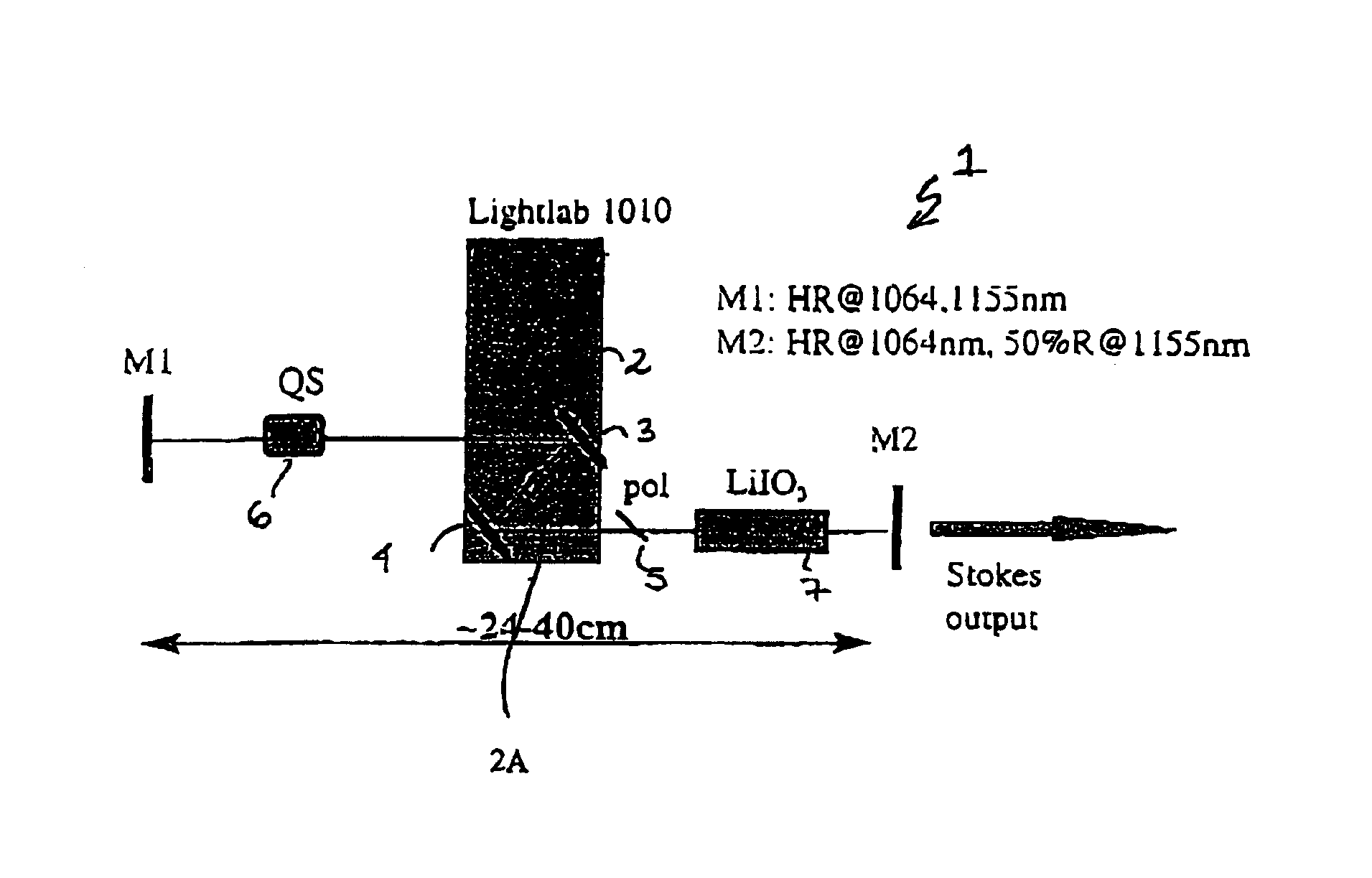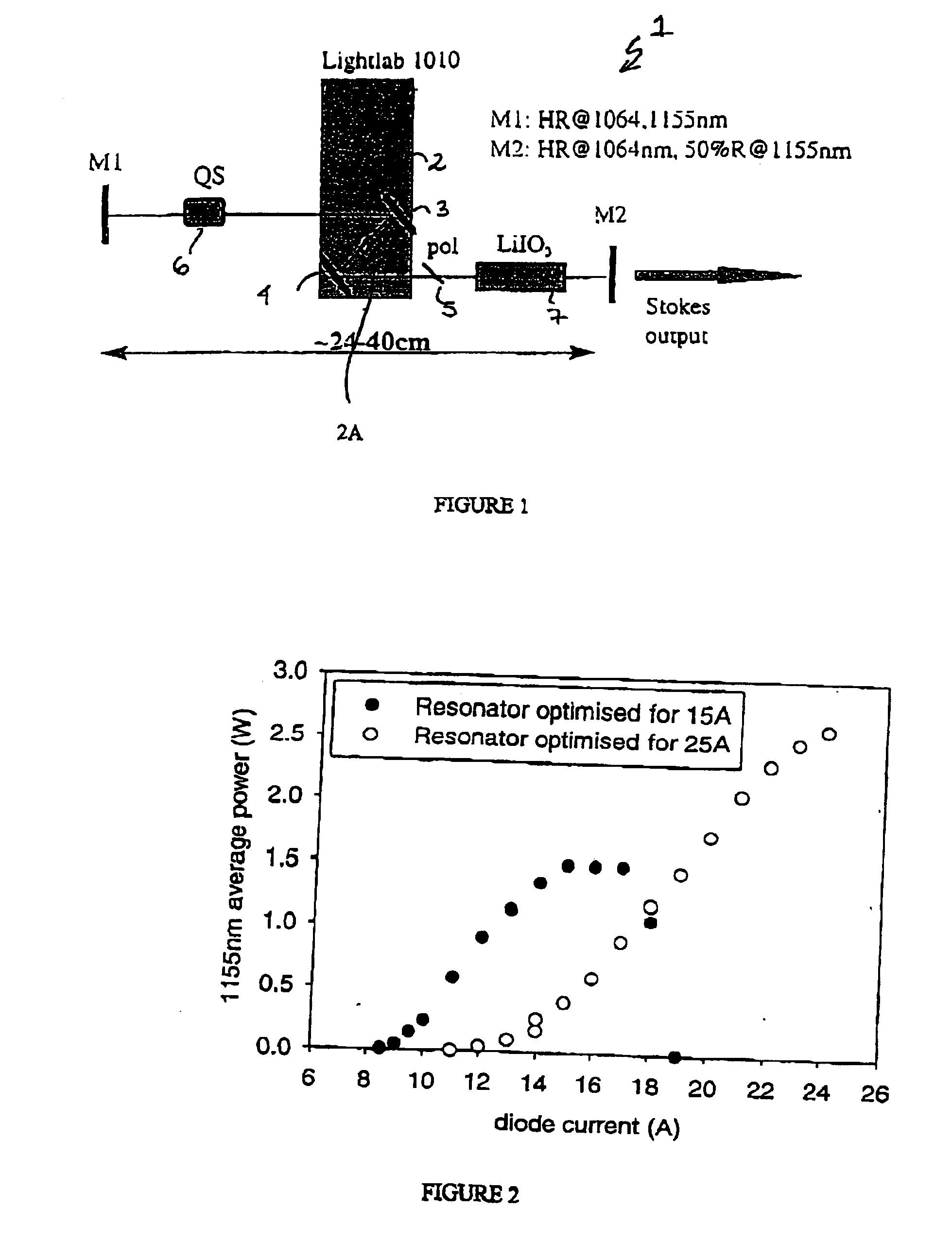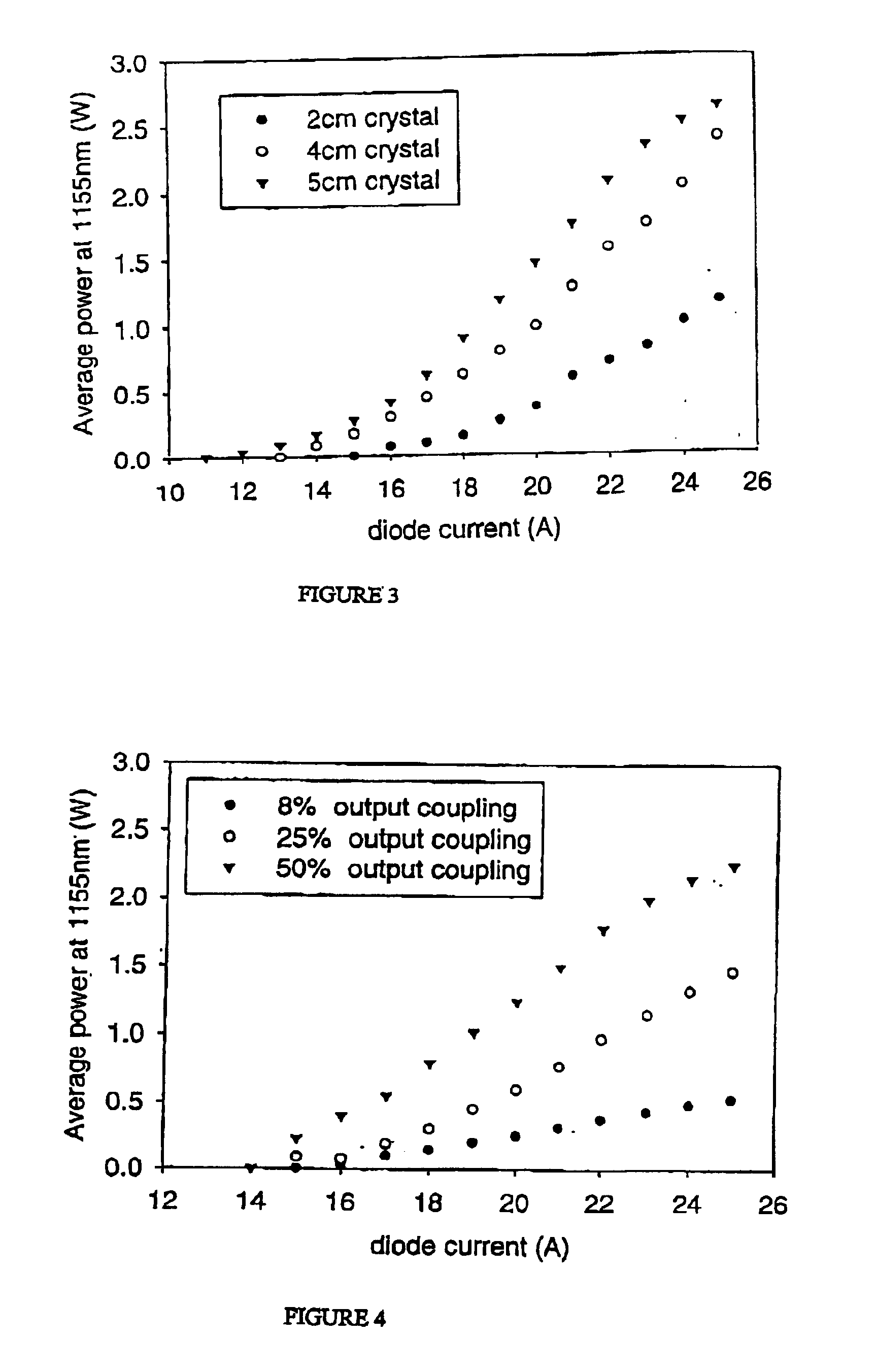Stable solid state raman laser and a method of operating same
a solid-state raman laser and stable technology, applied in the direction of laser details, optical resonator shape and construction, instruments, etc., can solve the problems of power drift, difficult to design solid-state raman lasers, complex design and operation, etc., to avoid optical damage to resonator components, maintain cavity stability, and maintain cavity stability
- Summary
- Abstract
- Description
- Claims
- Application Information
AI Technical Summary
Benefits of technology
Problems solved by technology
Method used
Image
Examples
example 1
[0108]Experiments were conducted using a Raman Laser configuration as shown in FIG. 1. The Raman Laser 1 included a diode-pumped Nd:YAG laser employing a commercial pump module (Light Solutions LightLab 1010) 2. The module contained a Nd:YAG rod which was double-end pumped through dichroic turning mirrors 3 and 4. The mirror coatings for M1, M2, 3 and 4 were chosen to provide a high-Q resonator for the fundamental and a lower Q for the first Stokes. Mirror M1 had high reflectivity (>99.9%) at 1064-1160 nm and various output coupling mirrors M2 were used with high reflectivity at 1064 nm and transmissions from 8 to 50% at approximately 1155 nm. The laser was polarised using a one or two Brewster plates 5 and acousto-optically Q-switched 6 at 5-25 KHz to produce pulses at 1064 nm typically of duration of 20-50 ns depending on cavity configuration. A LiIO3 Raman crystal 7 was also located within the cavity to provide a Stokes wavelengths of approximately 1155 nm (1155.2-1155.5 nm as me...
example 2
[0123]With reference to FIG. 11, the output of the pump laser diode 1 which is a 25 W fibre-coupled diode laser is launched via fibre end receptacle 2 for 600 μm diameter, 0.22NA fibre, two lenses 3 and 4 into the laser crystal 5 which is a Nd:YAG (5 mm×5 mm diameter laser crystal with mirror coatings on end 1 (5A):HR at 1064-1160 nm, HT at 805 nm and end 25B: AR@1064-1160 nm). The pump spot size (beam radius) in the laser crystal is approximately 300 microns. The laser resonator is defined by the first coated plane face of the Nd:YAG laser crystal 5, the plane dichroic mirror 9 at 45 degrees (HR at 1064-1160 nm, HT@578 nm and the end mirror 11 (HR at 578, 1064 and approx 1155 nm) which has a radius of curvature of 300 nm. An LBO 4×4×15 mm crystal is used as the frequency doubling crystal and a LiO3 crystal is used as the Raman-active crystal. The optimum lengths of the two arms of the resonator are 150 mm (YAG crystal to 45 degree mirror) and 90 mm (45 degree mirror to end mirror)....
example 3
[0127]A small-scale Raman laser operating at 1197 nm was used. In the system used, the pump laser diode had relatively low output power. 1.6 W of 808 nm diode pump light was focused into a 2×2×1 mm Nd:YVO4 crystal. An acousto-optic Q-switch was used to produce the necessary high peak powers for the SRS process. The Raman-active crystal was Ba(NO3)2 which provided one of the highest Raman gains, having a Raman shift of 1047 cm−1. The optimum arrangement for the intra-cavity SRS conversion included using a 10 cm long cavity, with 10% output coupling at 1197 nm and a pulse repetition frequency of 32 kHz. The First Stokes output occurred at 1197 nm and up to 120 mW of output power was obtained.
[0128]A frequency-doubled small-scale Raman laser operating at 1197 nm was used. Preliminary measurements were made of intracavity-doubled First Stokes output using a 10 mm long piece of LBO cut for type one phase making. Up to 6 mW at 598 nm was achieved under non-optimised conditions. The cavity...
PUM
| Property | Measurement | Unit |
|---|---|---|
| wavelength | aaaaa | aaaaa |
| wavelength | aaaaa | aaaaa |
| diameter | aaaaa | aaaaa |
Abstract
Description
Claims
Application Information
 Login to View More
Login to View More - R&D
- Intellectual Property
- Life Sciences
- Materials
- Tech Scout
- Unparalleled Data Quality
- Higher Quality Content
- 60% Fewer Hallucinations
Browse by: Latest US Patents, China's latest patents, Technical Efficacy Thesaurus, Application Domain, Technology Topic, Popular Technical Reports.
© 2025 PatSnap. All rights reserved.Legal|Privacy policy|Modern Slavery Act Transparency Statement|Sitemap|About US| Contact US: help@patsnap.com



